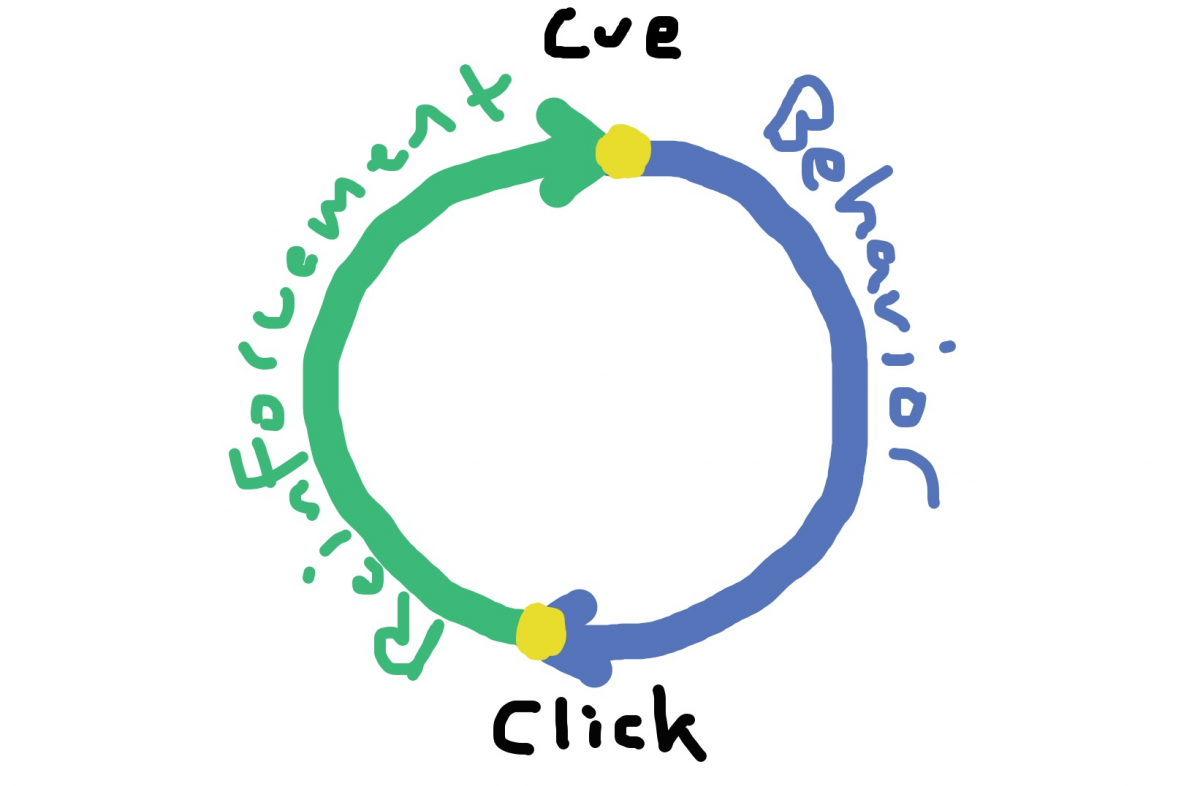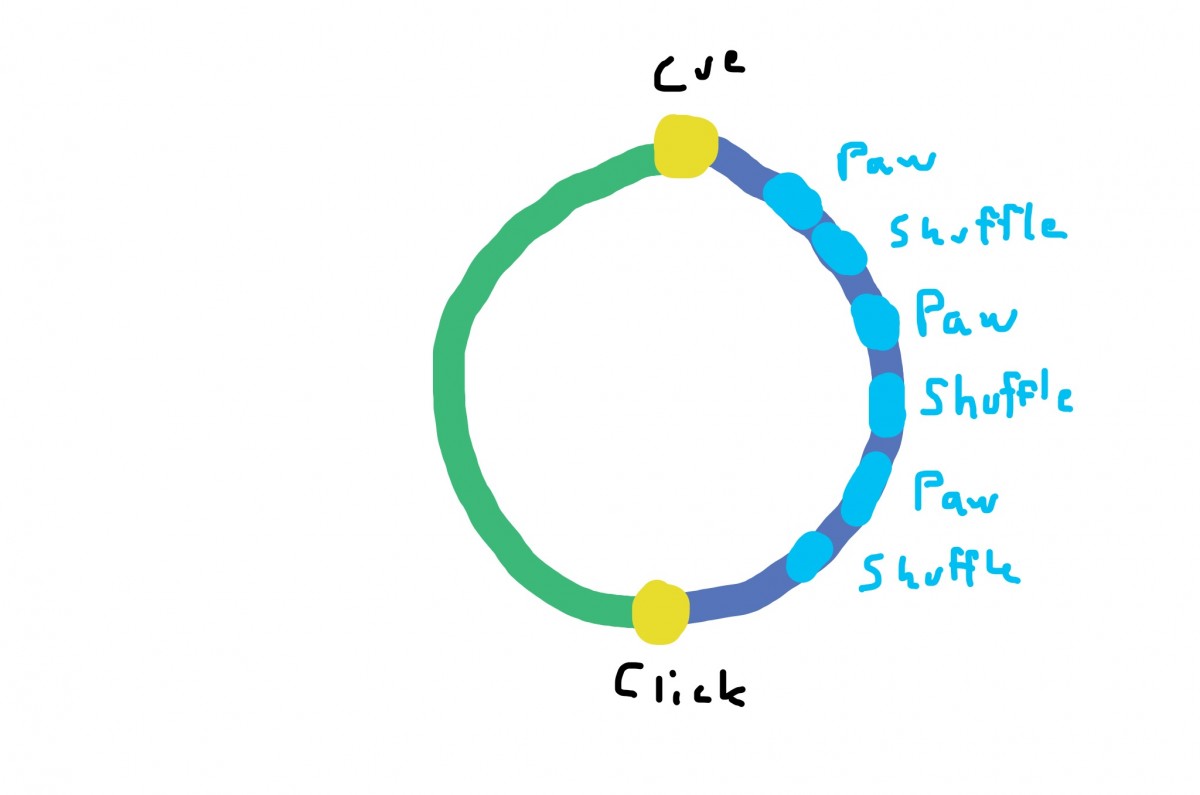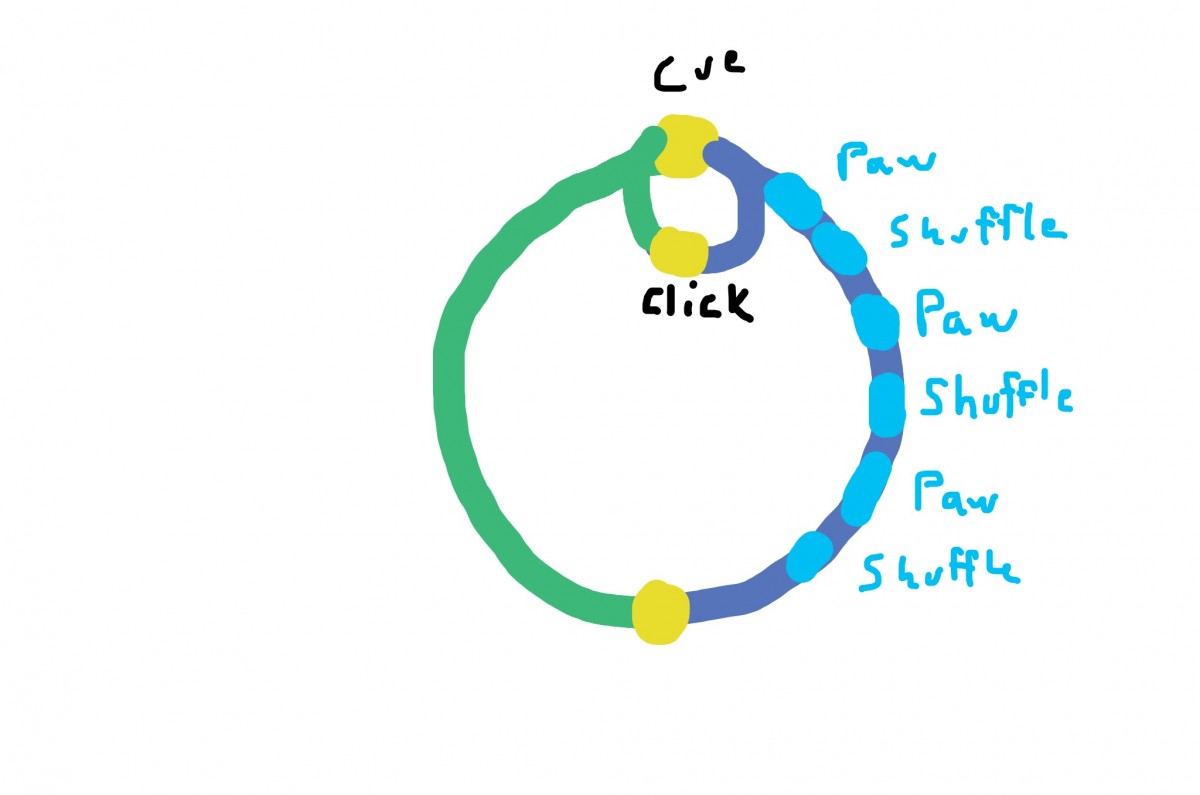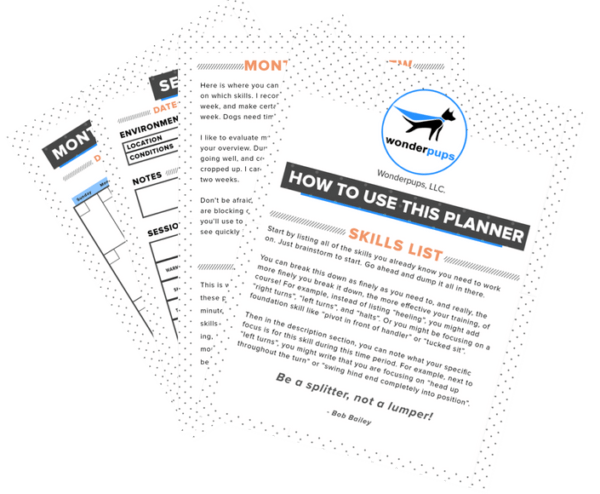I spend a lot of shower time ruminating on the intricacies of teaching a behavior with duration. What a rabbit hole… so many layers. While pondering some of my past training mistakes, Dr. Rosales-Ruiz’s words about behavior cycles popped into my mind and reminded me of something important.
This question comes up a lot: “When I am shaping for duration, my dog throws a lot of other behaviors. Should I wait him out and click for the right behavior?”
Short answer: Nope! That plan has a high probability of resulting in frustration (in dog AND handler) and equally high probability of undesired “junk” being included in our behavior. (I can tell you that from experience.)
Want to know more? Then grab a glass of wine, get comfortable, and read on.
In fact, this exact problem came up recently in a new training project I’m working on with Gambit, and makes a good example. My goal behavior is for him to stand for about 10 seconds with his paws on pods as part of his conditioning program. The problem is, that when I first started shaping him to put his paws on the pods, I inadvertently reinforced a lot of “junk”… pedaling his feet, shifting weight from one side to the other, and even some digging/swiping the pods. And there was a lot of stuff going on with his back feet, too. It looks a lot like this:
When we are shaping duration in a behavior, we are best served by setting our criteria so that we are always training ‘clean’ units of behavior. Clean chunks, if you will. And this really should be our emphasis (after emotional state, of course) when designing our training session.
To do that, we need to analyze what’s going on. Usually, it’s that I need to consider the entire behavior cycle because I almost certainly have a gap.
There you go on about behavior cycles again. What on earth are you talking about?
We tend to think of behavior as being in a straight line cue>behavior>click>treat, but really it’s a cycle. The behavior isn’t over until the dog is in a position to repeat the same behavior again. Alexandra Kurland describes this as “loopy” training. And here’s the kicker… EVERY PART OF THE BEHAVIOR CYCLE IS BEING REINFORCED.

(Yes, I made that diagram myself.)
Everything that happened between the Cue and the click is reinforced. Everything that happened between the click and the treat is reinforced. That means that if something I didn’t want to happen (say fidgeting feet for example) occurs in the cycle, I have just reinforced it. And now I am effectively building that junk into my behavior. ARGH!!!!
Ok, so it is important that I consider the entire cycle when I am looking at my training session. This is why it’s really inadequate (or at least very inefficient) to use “wait and reinforce longer behaviors” as a primary training plan for duration. Waaaaay too much room for other junk to creep in. And it always does. Junk behaviors are like cockroaches. They crawl in through the smallest cracks and are damn hard to eradicate once they’ve set up house (or been reinforced).
So, now what I’ve got looks like this:

Rats. I need to figure out when the fidgeting is starting so that I can get ahead of it. Then I can build a “clean” loop by cutting off the portion of the cycle that has all the junk in it.

So I change my plan in two ways. I’m going to click WAY earlier, and I’m going to deliver the treat on the floor so he has to step off the pods to eliminate the chance of pittering his feet. My goal was to click the moment he had two paws on the pods. But I was still getting more movement than I wanted. When I reviewed the video, I could see that I was actually still clicking too late. He puts one paw on the pod, then the next paw, and as soon as his weight is on that second paw, he’s moving the first one. Take a look at it in slow motion:
It looks like I actually need to click a split second earlier. So I switched my focus to clicking as soon as his paw even barely touched the pod. Before any shifting could occur. And it worked!
Take a look:
Now that I have a clean behavior to work with, it will be fairly easy for me to build up second by second to the total duration I am looking for on this behavior.
